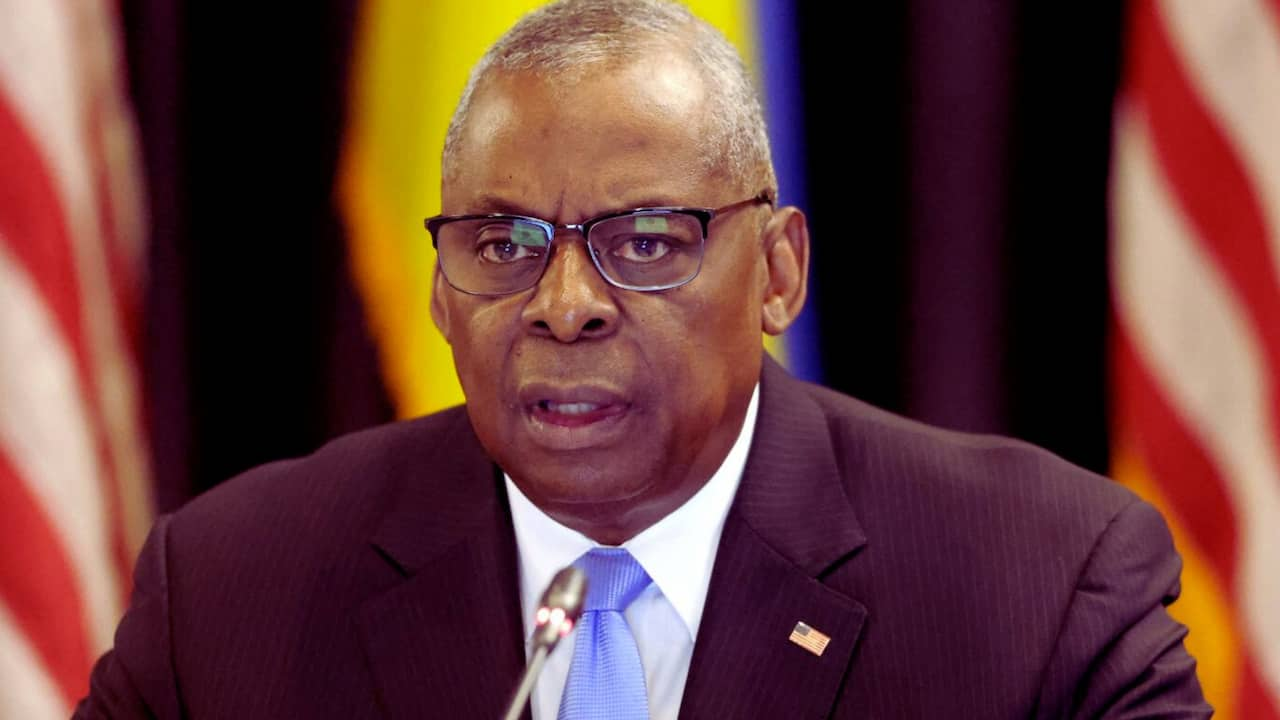Defense Chief’s Surprise Visit: Ukraine’s Future Hangs in the Balance
As a news reporter on the ground in Kyiv, I can confirm that U.S. Defense Secretary Lloyd Austin made an unexpected visit to Ukraine’s capital early Monday morning. This high-stakes trip comes at a critical time, with Russia slowly gaining ground and the U.S. presidential election looming on the horizon.
Explosions echoed through Kyiv, marking Austin’s arrival and serving as a stark reminder of the ongoing conflict. City officials quickly activated air defenses, highlighting the daily dangers faced by Ukrainians even after 2.5 years of war.
The Defense Secretary’s agenda is packed. He has scheduled a meeting with Volodymyr Zelensky, the President of Ukraine, and Rustem Umerov, the Defense Minister. Their talks will focus on Ukraine’s urgent weapons needs and how the U.S. can continue supporting Ukraine’s military in the coming year.
But this visit isn’t just about immediate aid. Austin wants to step back and look at the big picture of U.S.-Ukraine relations since the war began. It’s a chance to assess what’s worked and what hasn’t.
However, don’t expect any victory speeches. A senior defense official described Ukraine’s situation against Russia as “very tough” as winter approaches. This is despite massive Western sanctions on Russia, billions in U.S. military aid, and global support rallied by the Biden administration.
The upcoming U.S. election is a significant issue. A potential Donald Trump victory could throw U.S. support for Ukraine into question. Trump has been vague about whether he wants Ukraine to win and has criticized Zelensky’s leadership.
Despite this, the Pentagon is making plans based on the assumption that support will persist. Austin stated, “Every day, we are building long-term capability for Ukraine.” U.S. officials are banking on bipartisan support in Congress, but that’s far from certain. Far-right Republicans opposing Ukraine aid have already caused one major funding fight this year.
On the battlefield, the situation remains challenging for Ukraine. Russian forces are slowly taking territory and have a 3-to-1 advantage in firepower. They also have more troops and ammunition. Support from Iran, North Korea, and China is bolstering Russia’s war effort.
Yet Austin remains optimistic. He believes Ukraine has stopped Russia from achieving any major strategic goals. The Defense Secretary maintains confidence in the ability of U.S. allies to consistently support Ukraine.
Soon, new weapons systems such as NASAMS air defenses will be arriving. These investments made years ago are finally bearing fruit. Austin hopes this advanced technology will give Ukraine an edge, even as Russia maintains its numerical advantage.
As explosions continue to rock Kyiv, it’s clear that Ukraine’s fight for survival is far from over. The country faces a brutal winter ahead, with its very existence at stake. Zelensky refuses to give up any territory and is pushing for NATO membership as the path to victory.
Austin’s visit sends a strong message of continued U.S. support. But with political uncertainty at home and a relentless enemy abroad, Ukraine’s future remains hanging in the balance. The coming months will be crucial in determining whether the country can hold out against Russian aggression and maintain vital Western backing.
As this reporter signs off from Kyiv, one thing is certain: the world is watching, and the stakes couldn’t be higher.
